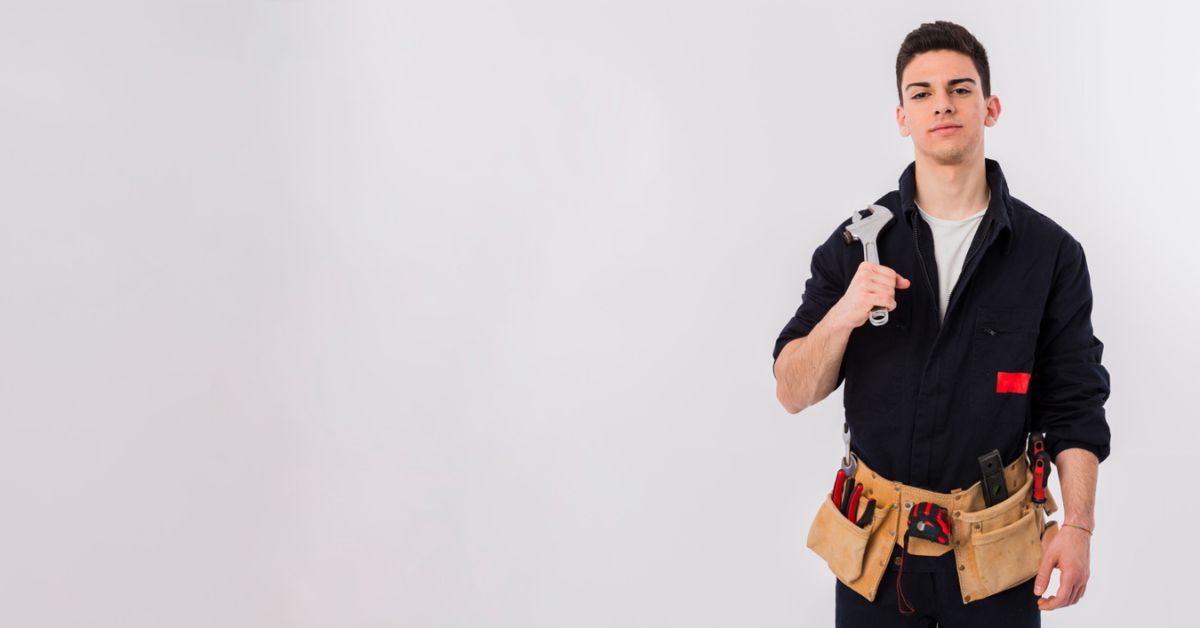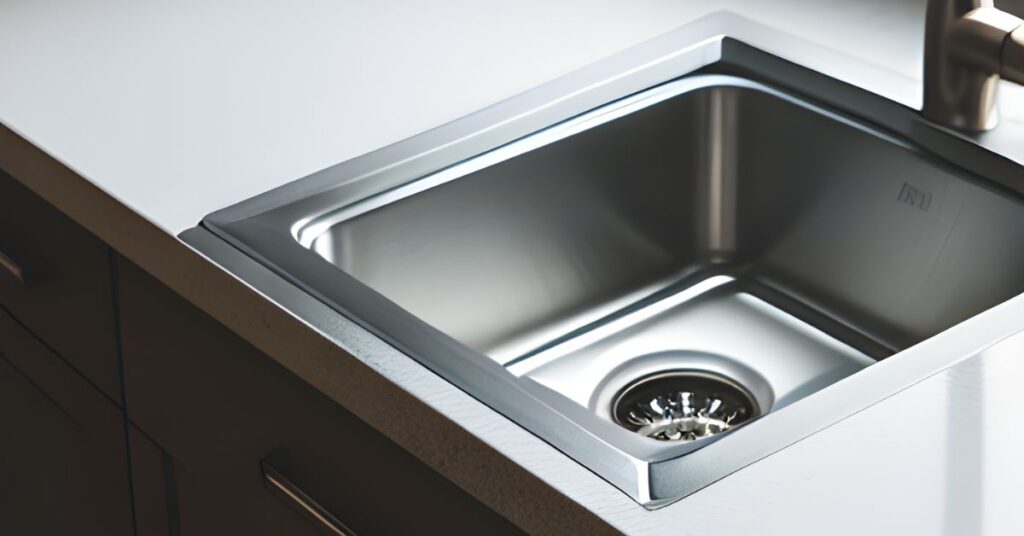Your home’s sewer line is very important because it moves wastewater away from your land and keeps it clean and functional. But if you don’t do proper sewer line maintenance, problems can quickly become expensive and inconvenient.
In this blog, we’ll show you how to keep your home’s sewer line in good shape and help you avoid problems like clogs, leaks, and other plumbing nightmares. By doing these easy but effective maintenance tasks, you can make sure that your sewer system stays healthy and lasts as long as possible.
What Causes Common Sewer Main Line Problems?
Several things can lead to the most common sewer main line troubles. Corrosion is a common problem because sewer lines are exposed to the chemicals and bacteria in wastewater, which slowly eat away at the pipes and make them weaker until they crack or break. Roots from nearby trees are another usual cause. In places with big trees, roots can grow into sewer lines to find water and food. This can cause blockages or damage to the pipes.
Grease and oil that are not thrown away properly are another cause. When these things are dumped down drains, they build up in sewer lines and cause clogs that make it hard for wastewater to move. This problem is especially likely to happen in homes that throw away a lot of grease.
When toys, rags, paper towels, and sanitary products get into sewer pipes by chance, they can also cause blockages. These things get stuck in the lines and stop the wastewater from going where it needs to go.
Also, natural events like earthquakes and heavy rain can cause damage to the structure of sewer lines. When these things happen, the pressure can cause pipes to crack, break, or move, which can lead to leaks and other problems. Understanding these common reasons can help you spot possible problems and take the right steps to keep your sewer main lines in good shape.
Top Tips For Maintaining a Sewer Line
1. Be cautious about putting food in drains
Even though most kitchen sinks have a garbage disposal, you shouldn’t put all of your leftover food down the drain.
Limiting the amount of food you put down drains, especially in the kitchen, is one of the best sewer line maintenance you can get into. Food waste is bigger than other trash, so it doesn’t go through your sewer line as easily as other trash does. This also means that food can pile up in the line, making it longer.
By taking food off your dishes and putting it in the trash, you can keep sewer lines from getting clogged. Stringy foods, eggshells, coffee grounds, and starches are all things you should avoid putting down the drain.
Putting too much food in the trash disposal can lead to a number of problems and risks. One big risk is that the pipes could get clogged. When the disposal is too full, the extra food waste might not get ground up well, and it might build up in the disposal unit or the pipes. Over time, this buildup can lead to a clog, which can cause water to back up and other plumbing problems.
If you put too much in the garbage disposal, the blades could get broken. The blades in a garbage disposal are made to deal with small amounts of food trash at a time. When too much food is put in all at once, the blades can get too heavy and get damaged. This harm not only shortens the life of the disposal but may also mean that it needs to be replaced, which will cost you more money.
Putting too much food in the garbage sink can lead to clogs, damage, and bad smells. If the food waste is not ground up enough, it can start to break down and smell bad as it does so. These smells can be annoying and may even attract bugs, making the kitchen a dirty and uncomfortable place to be.
To reduce these risks, it’s important to follow some rules when you use the garbage sink. First of all, you should only put a small amount of food trash into the garbage disposal at a time. This makes sure that the disposal can grind up the trash well and keeps it from getting clogged.
Also, you should never put certain things down the garbage sink because they can damage it or cause it to get clogged. You should never put grease or oil, bones, stringy vegetables, pits or seeds from the fruit, or hard things like eggshells or toothpicks in the garbage sink.
If the garbage machine starts making loud noises, you should turn it off right away. This noise could mean that the blades are too loaded or broken, and if you keep using the shredder in this state, the problem could get worse.
2. Use high-volume flush
Set your toilets to flush with a lot of water. This will also help keep your sewer lines clean. Low-flow or low-volume toilets save more water, but they might not be able to flush waste out of your system if your sewer lines have low spots or a negative slope. Even in places with a negative slope, solid waste will be flushed out of your sewer line if you use a toilet with a lot of water flow.
High-volume flushes are great at getting rid of large amounts of trash, which makes them perfect for homes with many people or cases where a lot of trash needs to be thrown away, like diapers or feminine hygiene products. Also, because these toilets hold a lot of water, they are less likely to get clogged. This is especially helpful in homes where clogs happen often.
Some people also find high-volume flush toilets more comfortable because they get rid of waste quickly and thoroughly. This means that odours or residue are less likely to stick around.
But you should also think about the bad things about high-volume flush toilets. These toilets use more water per flush than low-flow toilets, which could lead to higher water bills and make water shortages worse, especially in areas where there are water limits or conservation efforts.
Also, high-flow toilets can make more noise when they flush than low-flow toilets, which can be annoying, especially at night or early in the morning when it’s silent. While high-volume flush toilets are good at getting rid of waste, they may not be as water-efficient overall, using more water than they need to and adding to waste and environmental issues.
It’s important to think about your wants and preferences when choosing a toilet. Think about things like how much water you use, and choose EPA-approved WaterSense toilets that use 20% less water than normal toilets while still flushing well.
Larger households or older plumbing systems that need to get rid of trash well may benefit from higher volumes.
By carefully weighing these factors and thinking about the pros and cons of high-volume flush toilets, you can make a choice that fits your needs, your goals for saving water, and your personal preferences.
3. Don’t flush anything that doesn’t break down easily
One of the best sewer line maintenance tips out there is knowing what you can and can’t flush down the toilet. Only pee, poop, and toilet paper should go down the toilet. These three things are often called human waste or the three Ps: pee, poo, and paper.
If you flush anything else down the toilet, it could cause jams or other plumbing problems. There are a few common things that you should never put down the toilet.
For example, disposable diapers are not made to break down in water and can clog pipes if they are flushed. In the same way, you shouldn’t flush feminine hygiene items like tampons and pads because they can add to clogs. Paper towels should also be avoided because they don’t break down easily when wet, which could lead to clogged pipes.
Also, you should never pour or flush things like grease and oil down the toilet because they can solidify in the pipe system and cause clogs. If you flush food trash down the toilet, it can break down and cause clogs or other sewer line problems. Even though some cleaning wipes are labeled “flushable,” you shouldn’t flush them because they don’t break down easily and can clog pipes and make the environment dirty.
Medication should also not be flushed down the toilet because it can pollute the water supply and hurt marine life. Dangerous chemicals like paint thinner, gasoline, bleach, and other similar substances should never be flushed down the toilet because they are bad for the environment and could be dangerous to your health.
If you aren’t sure if something can be flushed safely, it’s best to throw it away in the right trash can. By following these tips, you can help keep your plumbing system running well, avoid expensive fixes, and do your part to protect the environment.
4. Maintain tree roots
Maintaining plant or tree roots is a valuable sewer line maintenance method you shouldn’t miss. To keep plant or tree roots from damaging sewer lines, you have to be careful and take some proactive steps. Here are some important tips that will help you:
First, it’s important to choose plants that do well in your area. Some trees, especially those with roots that spread out too far, are more likely to break lines. Do some research and choose plants that will grow well in your area and dirt.
Make sure to keep trees and shrubs away from your sewer line when you put them. Since tree roots can grow up to 100 feet away from the trunk, putting them far from the sewer line helps keep roots from getting in.
It’s best to keep cutting back the roots of trees and bushes near the sewer line. This will help keep roots from growing into the lines and lessen the chance of damage.
Root barriers are actual barriers that are put up around the sewer line to stop tree roots from growing into the pipes. There are different kinds of root blockers, so choose the one that fits your needs the best.
Check your sewer line for breaks or cracks and other signs of damage on a regular basis. If you see any problems, it’s important to get them fixed right away to stop more damage.
Here are some more things to think about:
Don’t overwater your plants because too much water can speed up root growth, which can damage pipes. Use fertilizers with less nitrogen because nitrogen makes roots grow and can cause roots to grow into pipes.
If you have a backwater valve, make sure to check it often to make sure it is still working. The overflow valve keeps sewage from coming back up into your home. If a valve isn’t working right, sewage could back up and damage your lines.
By using these tips and taking care of your plants the right way, you can make sure the roots are healthy and reduce the chance of hurting your sewer lines.
5. Avoid FOG buildup
FOG, which stands for fats, oils, and grease, is another thing that needs to be kept from building up in sewer lines. In fact, most sewage overflows are caused by FOG. When you put these things down your drains, it makes it easy for other foods to stick to your lines and harden inside your sewer line.
Since FOGs are high in protein, they often cause drains to get clogged. The pipe’s flow way gets smaller and smaller as the buildup gets worse.
It is highly recommended that you put a filter in your sink. Strainers do a good job of catching food and grease so they don’t go down the drain and cause clogs.
Clean your drains often as part of your sewer line maintenance list to keep FOG from building up. For this, you can buy drain cleaners or mix baking soda and vinegar together to make your own. These cleaning products help break down the grease that has built up in the drains and keep them clear.
Don’t put strong chemicals down your drains because they can damage your pipes and make the problem worse.
Throw away cooking oil in the right way. If you have a lot of cooking oil, you might want to take it to a recycling center or throw it away in special bags. Clean up any grease or oil spills right away so they don’t harden and cause problems.
Every few years, you should have professional sewer cleanup services in Alliston for your sewer line. This preventative step will get rid of any grease, oil, or other debris that has built up and could cause clogs.
6. Use one-ply toilet paper
You shouldn’t flush things like “flushable” wipes, and using thick toilet paper could also cause your sewer lines to get clogged. If you can’t suddenly stop using toilet paper at home, you should only use one-ply toilet paper and keep your sewer line open.
There are a few good reasons to use toilet paper with only one layer.
First of all, it is cheaper than thicker options like two-ply or three-ply toilet paper. This is because it is made with fewer materials, which keeps costs down.
Second, one-ply toilet paper is less likely to get stuck in the toilet because it is smaller and breaks down more easily in water. This makes it a good choice for older plumbing systems or places where the water flow isn’t as strong.
Using toilet paper with only one layer is also good for the environment. It uses fewer resources and less material to make than thicker alternatives, so it has less of an effect on the earth. This helps protect the environment because it uses fewer trees and less energy during production.
But it’s important to think about the bad things about one-ply toilet paper. Some people might find it less soft and less comfortable than two- or three-ply choices. Also, one-ply toilet paper may not be as absorbent as other types, so you may need to use more sheets to get the same amount of absorption as with thicker toilet paper.
In the end, people choose toilet paper based on their own tastes and wants. To make an informed choice, you should think about things like your personal preferences (softness, comfort, or impact on the environment), the condition of your plumbing system (especially if it is older or prone to clogs), and your budget. Taking all of these things into account will help you choose a type of toilet paper that fits your preferences, plumbing needs, and price.
7. Do preventative flushing and cleaning
The goal of preventative flushing and cleaning is to make sure that drains and lines work as well as possible by clearing out possible clogs and removing built-up debris. By following this sewer line maintenance tip, you can reduce the chance of plumbing problems and save money on repairs over time.
There are different ways to flush and clean for maintenance purposes. Pouring a pot of boiling water down each drain in the house once a week is a usual way to clean them. The hot water helps to dissolve and get rid of any grease or oil that has built up in the lines. It also helps to move any debris that has built up over time.
You could also use commercial drain cleaners, but you need to be careful when using these items. It is very important to carefully follow the directions on the product labels, as these cleaners can be strong and could damage lines if they are not used properly.
Preventative flushing and cleaning are regular maintenance tasks that homes can do to make their plumbing last longer and avoid blockages and other plumbing problems. Whether you use boiling water or a commercial drain cleaner, it’s important to use these ways correctly and follow the instructions.
Hire Professional Sewer Cleanup Services in Alliston
In conclusion, if you want to avoid expensive and annoying plumbing problems, you need to take care of your home’s sewer line. By using the sewer line maintenance tips and tricks we’ve talked about in this blog, you can make it much less likely that your sewer line will back up or get clogged. Remember to watch what you put down your drains, check them often, and call an Alliston professional plumber when you need to.
At Precise Plumbing, we know that sewer line problems can happen even if you do everything right. That’s why we’re here to help clean up sewer backups in a reliable way. Our team of skilled professionals knows how to handle any sewer line problem quickly and effectively thanks to their knowledge and specialized tools. Whether it’s getting rid of stubborn clogs, fixing broken pipes, or cleaning up after a backup, you can count on us to get your sewer system back in top shape.
Don’t let sewer line issues disrupt your life or cause extensive damage to your house. Contact Precise Plumbing right away if you need help cleaning up a sewer backup, and you can rest easy knowing that your plumbing is in good hands. We’re committed to giving you great service and making sure the sewer line in your home stays in good shape for years to come.
Remember that a well-maintained drain line is the key to a plumbing system that works well. With the right plumbing care and professional help when you need it, you can have a plumbing system in your home that works well and doesn’t give you any problems.


